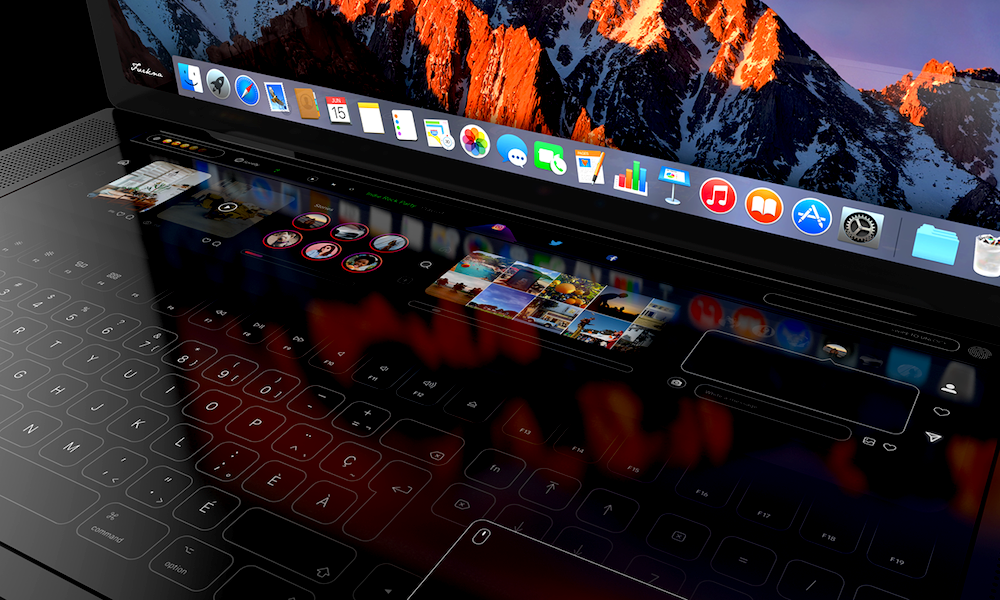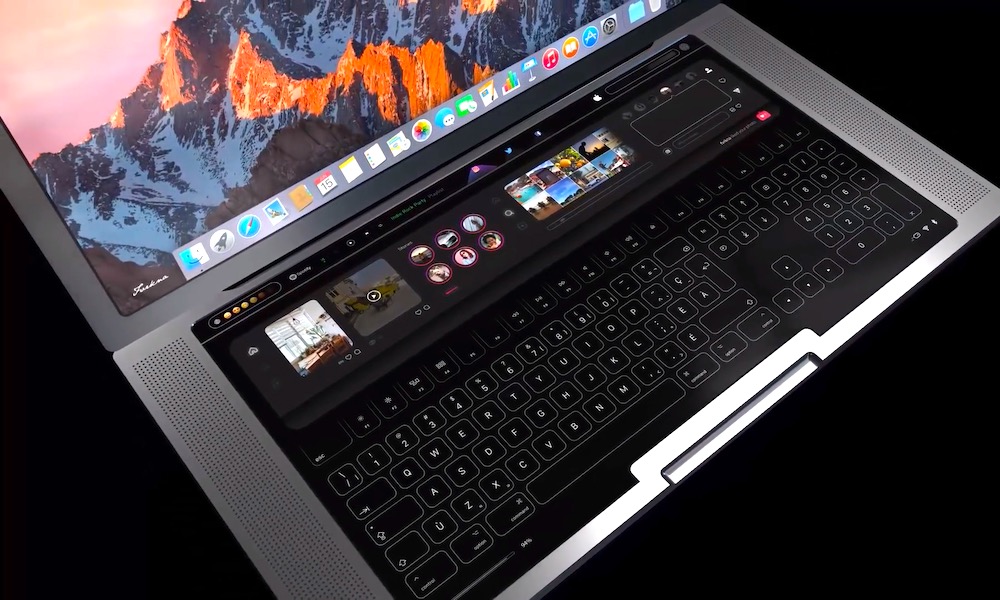Apple Has a Big Keyboard Problem – This Is the Futuristic Solution We Need
 Credit: Behance / FVRKNA
Credit: Behance / FVRKNA
Toggle Dark Mode
Apple’s butterfly keyboards have a problem. Apple is, undoubtedly, going to fix them. But probably not how you might think.
To be clear, the butterfly keyboard is probably isn’t a failure in the way many outlets and Apple critics have portrayed it. Some people are perfectly happy with the design, or haven’t experienced any issues. But the butterfly keyboard does have a worryingly high failure rate.
Even if only a small number of all butterfly keyboards actually fail, there’s a lot of evidence that it’s seeing a much higher failure rate than the keyboards on past Mac notebooks.
Apple isn’t going to ignore this issue – and if the MacBook lineup is going to continue, it can’t ignore the issue. In other words, Apple has to fix it.
As far as how, Mac fans have been clamoring for a return to chiclet-style keyboards. That’s probably not going to happen – there’s simply no way Apple is going to make its Mac notebooks any thicker. That rules out any possibility of going back to traditional laptop keyboard styles.
Instead, a future version of the MacBook Pro is likely to implement another solution entirely: touchscreen-based, haptic keyboards.
The butterfly keyboard design itself seems like a step in this direction. It has an extremely slim profile and a low key travel. It’s almost as if Apple is getting its users ready for a touchscreen keyboard by slowly transitioning over to it.
That’s not even considering the Touch Bar, which is essentially a touchscreen keyboard in a smaller form.
This prediction isn’t being pulled out of thin air, either. Apple has filed patents for MacBook touchscreen keyboards before. Taking these into account when looking at the future of the Mac — amid complaints about current keyboards — makes it seem fairly obvious where Apple is going.
A touchscreen keyboard would, of course, have its own set of downsides. For the most part, keyboard enthusiasts want physical, tactile feedback and a good amount of key travel in a notebook keyboard. A touchscreen-based solution wouldn’t have either of these.
But a haptic keyboard would have its own set of benefits. And for many users, those benefits may outweigh the downsides.
Benefits of a Touchscreen Keyboard
For one, a touchscreen keyboard would be completely resistant to dust — since there aren’t any key switches that can fail. Some have theorized that the butterfly keyboards issues are tied to long-term heat damage from a notebook’s internal components. Presumably, touchscreen keyboards would be more resistant to that problem, too.
A touchscreen Mac keyboard would also be completely customizable. That could be based on context or user preference — and could come in handy for users who’d like to switch between different keyboard languages or formats in a pinch.
There’s also the possibility that the keyboard could be used as a traditional touchscreen, perhaps with Apple Pencil support. That could make the MacBook Pro just as suitable for drawing, art or handwriting as the iPad Pro lineup.
Without the need for key switches, a MacBook Pro could be made even thinner. Though, to be fair, they’re already pretty thin as it is. A better solution may be for Apple to use the extra space for internal components like batteries, or a better thermal profile.
As far as tactile feedback, a touchscreen may lose some points. Of course, users will get used to a touchscreen-based solution, despite what they might say before trying it.
Just think about how many consumers initially responded to the iPhone, with its touchscreen keyboard. Some people hated it and much preferred their Blackberry-style physical keyboards. Twelve years after the iPhone’s release, look at where we are.
And this is assuming that the typing experience would be akin to an iPhone or iPad. Apple could actually take the MacBook touchscreen keyboard in another direction.
Apple’s patent on the tech, for example, mentions a flexible display that could allow the digital keys to actually depress. That, combined with other haptic feedback technology, could theoretically provide a fairly pleasant typing experience — even without any key switches involved.
Of course, this is all just speculation and there’s no guarantee that Apple will go this route or incorporate any of these ideas. But if you look at the evidence and the current Mac keyboard situation, a touchscreen-based solution only seems more and more probable.








